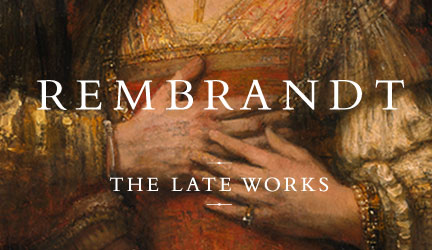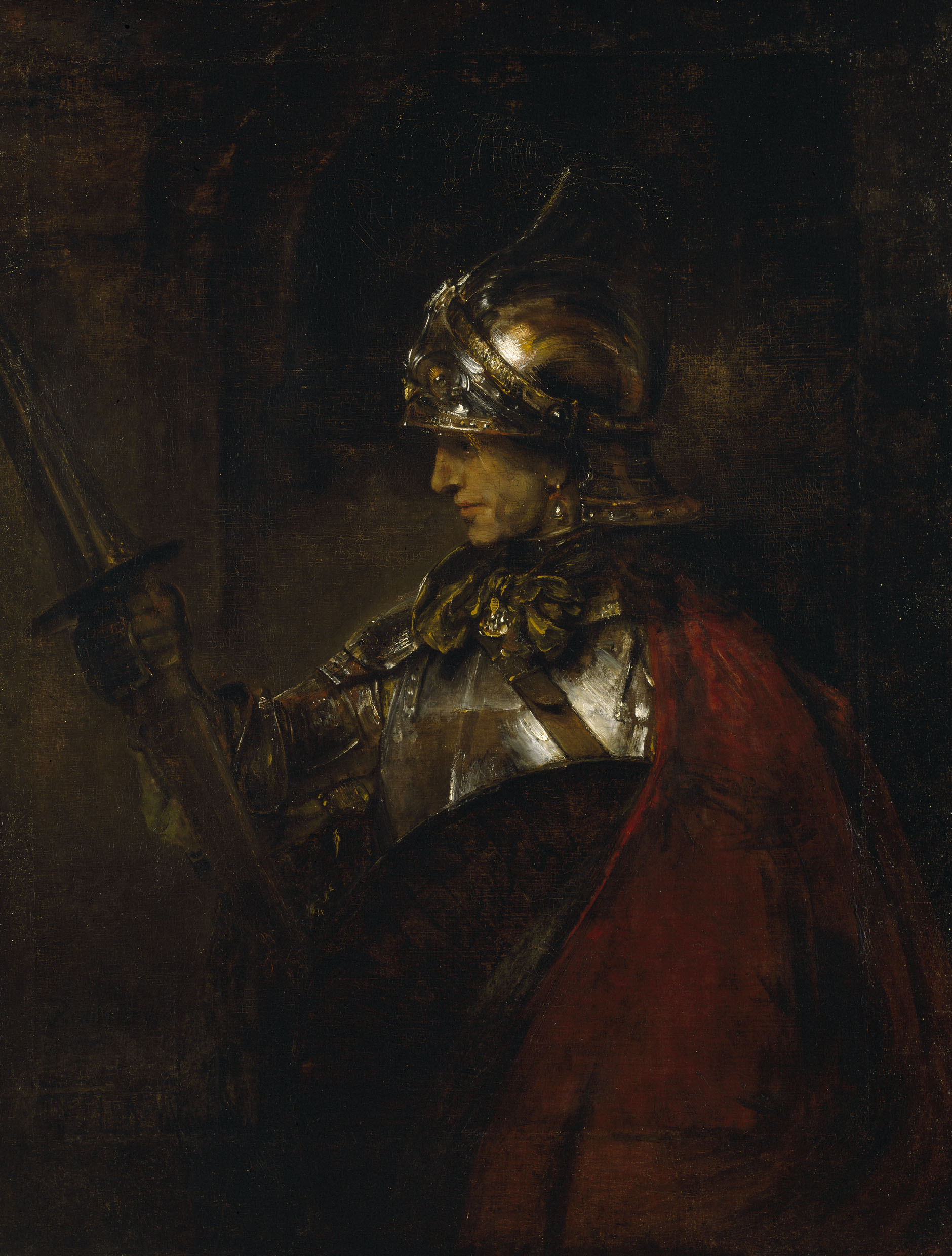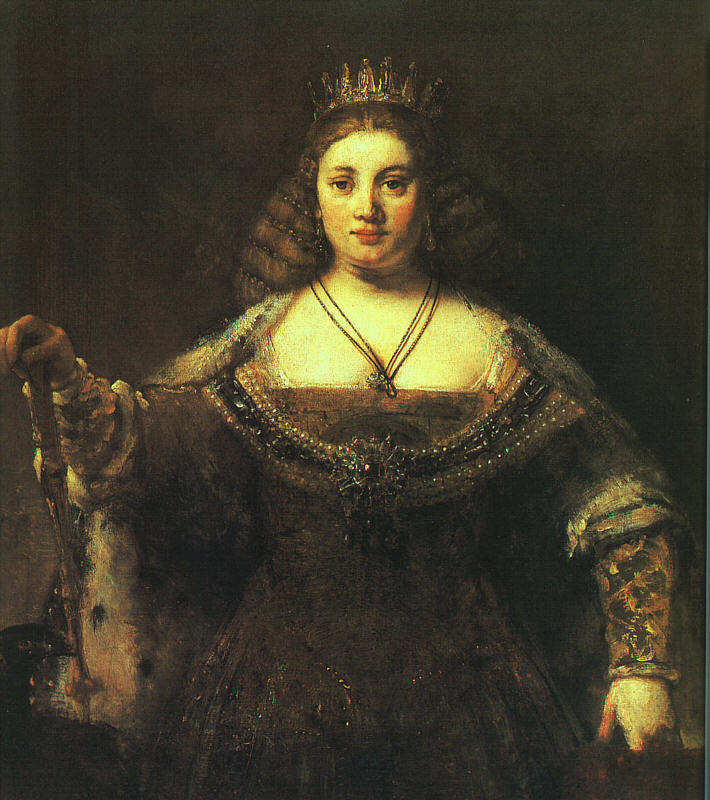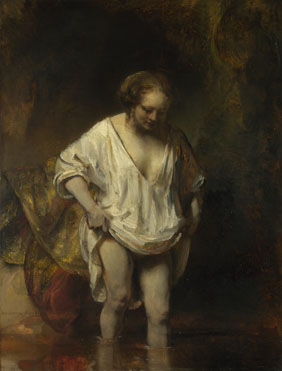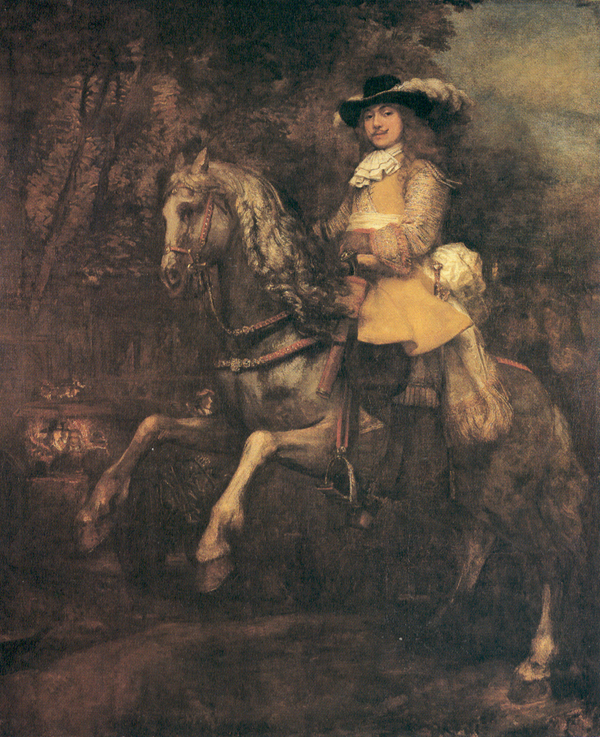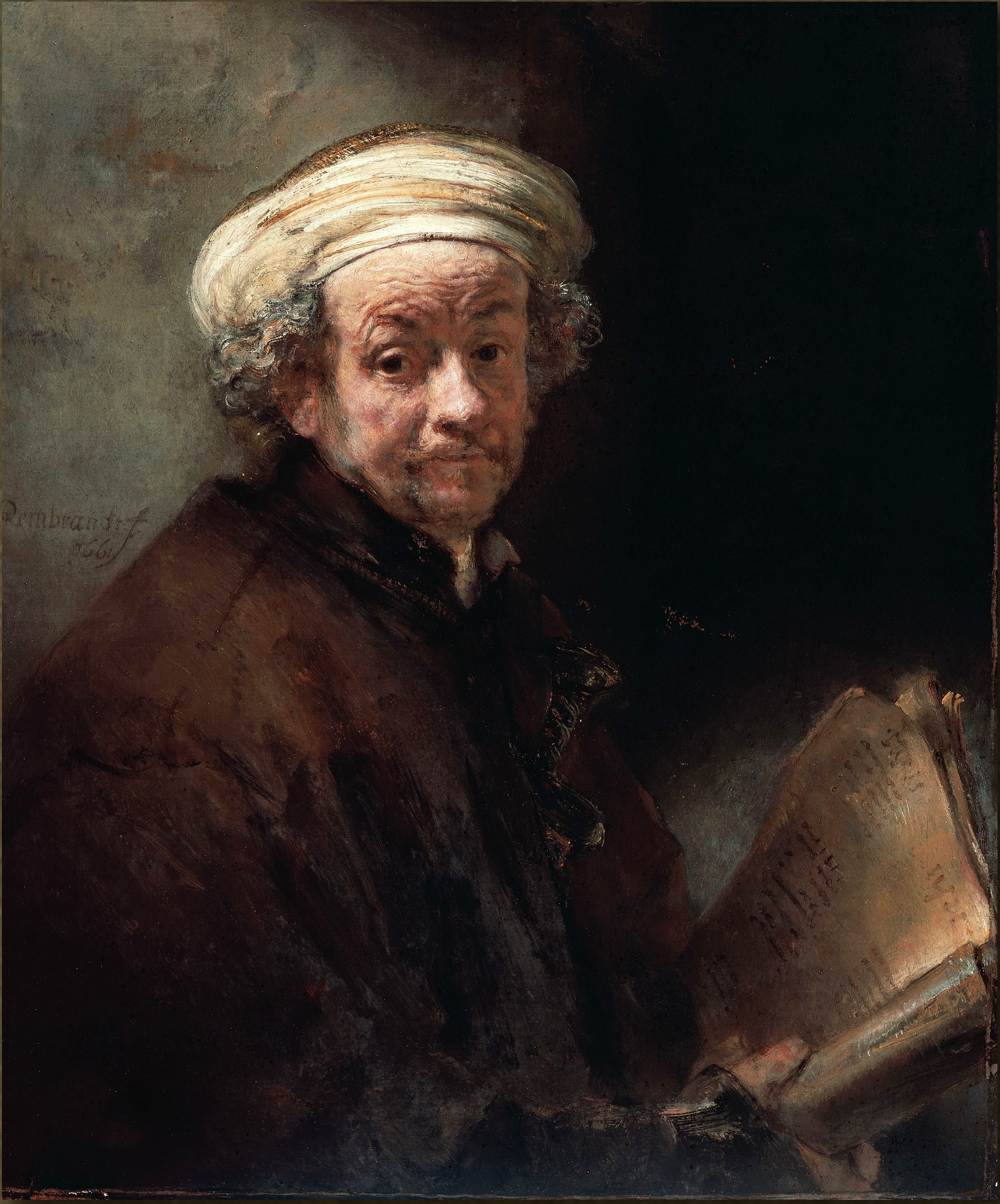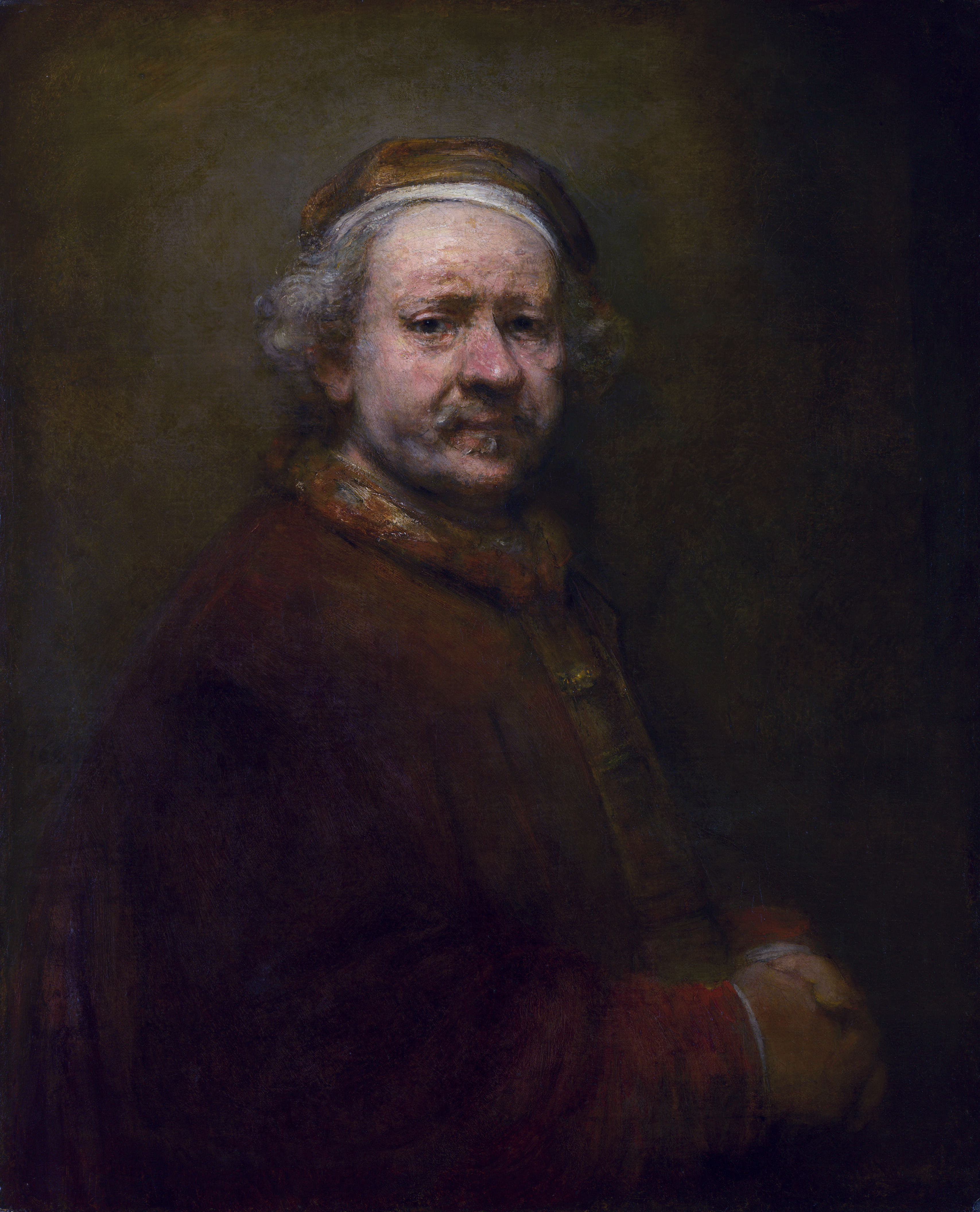This autumn, 15 October 2014 – 18 January 2015, the National Gallery presents a once-in-a-lifetime exhibition, 'Rembrandt: The Late Works' - the first ever in-depth exploration of Rembrandt’s final years of painting.
Far from diminishing as he aged, Rembrandt's creativity gathered new energy in the closing years of his life. It is the art of these late years - soulful, honest and deeply moving - that indelibly defines our image of Rembrandt the man and the artist. This landmark exhibition, featuring unprecedented loans from around the world, is a unique opportunity to experience the passion, emotion and innovation of Rembrandt, the greatest master of the Dutch Golden Age.
Betsy Wieseman, Curator of 'Rembrandt: The Late Works', says:
“Even three-and-a-half centuries after his death, Rembrandt continues to astonish and amaze. His technical inventions, and his profound insight into human emotions, are as fresh and relevant today as they were in the 17th century.”
From the 1650s until his death, Rembrandt (1606-1669) consciously searched for a new style that was even more expressive and profound. He freely manipulated printing and painting techniques in order to give traditional subjects new and original interpretations. The exhibition illuminates his versatile mastery by dividing paintings, drawings and prints thematically in order to examine the ideas that preoccupied him during these final years: self-scrutiny, experimental technique, the use of light, the observation of everyday life, inspiration from other artists and responses to artistic convention, as well as expressions of intimacy, contemplation, conflict and reconciliation.
'Rembrandt: The Late Works' features approximately 40 paintings, 20 drawings and 30 prints - each undisputedly by the master himself. Private and institutional lenders have proved exceptionally generous with outstanding loans from collections across the world.
Key works include:
'The ‘Jewish
Bride’' (Rijksmuseum, Amsterdam)
'An Old
Woman Reading' (The Buccleuch Collection, Scotland)
'A Man in
Armour' (Glasgow Museums: Art Gallery, Kelvingrove)
'A Young
Woman Sleeping' (British Museum, London)
'Juno'
(Hammer Museum, Los Angeles)
'Portrait of
a Blond Man' (National Gallery of Victoria, Melbourne)
The Suicide
of Lucretia' (The Minneapolis Institute of Arts, Minnesota)
'Bathsheba
with King David’s Letter' (Musée du Louvre, Paris)
'Titus at
his Desk' (Museum Boijmans van Beuningen, Rotterdam)
'A Portrait
of a Lady with a Lap Dog' (Art Gallery of Ontario, Toronto)
'Lucretia'
(National Gallery of Art, Washington DC)
and the National Gallery’s own
The exhibition gives visitors new insight into some of Rembrandt’s most iconic works such as,
'The Sampling Officials of the Amsterdam Drapers’ Guild' (Rijksmuseum, Amsterdam) better known as 'The Syndics',
revealing his brilliance in combining light and shadow and colour and texture, to give a radical visual impact to a traditional portrait. Numerous examples of Rembrandt’s finest etchings demonstrate his skilful development of printing techniques to achieve unique effects.
'The Sampling Officials of the Amsterdam Drapers’ Guild' (Rijksmuseum, Amsterdam) better known as 'The Syndics',
revealing his brilliance in combining light and shadow and colour and texture, to give a radical visual impact to a traditional portrait. Numerous examples of Rembrandt’s finest etchings demonstrate his skilful development of printing techniques to achieve unique effects.
A highlight of the exhibition is the juxtaposition of a number self portraits including
'Self Portrait as the Apostle Paul' (Rijksmuseum, Amsterdam),
'Self Portrait with Two Circles' (English Heritage, The Iveagh Bequest (Kenwood)),
'Self Portrait Wearing a Turban' (Royal Picture Gallery Mauritshuis, The Hague), and
'Self Portrait at the Age of 63' (National Gallery).
The latter two, painted in the final years of his life, show Rembrandt’s exceptional honesty in recording his own features as he aged.
'Self Portrait as the Apostle Paul' (Rijksmuseum, Amsterdam),
'Self Portrait with Two Circles' (English Heritage, The Iveagh Bequest (Kenwood)),
'Self Portrait at the Age of 63' (National Gallery).
The latter two, painted in the final years of his life, show Rembrandt’s exceptional honesty in recording his own features as he aged.
In one of the most moving works in the exhibition, the so-called 'Jewish Bride' (Rijksmuseum, Amsterdam), Rembrandt depicted a couple’s tender affection for each other with exquisite sensitivity. Upon viewing this painting for the first time in 1885, Vincent van Gogh confessed to a friend that he would gladly give up 10 years of his life to be able to sit in front of the painting for a fortnight with only a crust of dry bread to eat.
He exclaimed in a letter to his brother Theo:
''What an intimate, what an infinitely sympathetic painting.''
It is this relentless, unfettered creativity of Rembrandt that influenced countless printmakers, painters and draughtsman in the generations that followed him, and which continues to inspire artists today.
'Rembrandt: The Late Works' will screen in cinemas across the UK from 2 December and then worldwide in 45 countries from 17 February, filmed exclusively for the big screen in high definition.
Publication
The 304-page publication to accompany the exhibition is 'Rembrandt: The Late Works' by Jonathan Bikker (Research Curator, Rijksmuseum) and Gregor J.M. Weber (Head of the Department of Fine Arts, Rijksmuseum). With contributions by Erik Hinterding (Curator of Prints, Rijksmuseum), Marjorie E. Wieseman (Curator of Dutch and Flemish Paintings, The National Gallery), Marijn Schapelhouman (Senior Curator of Drawings, Rijksmuseum) and Anna Krekeler (Paintings Restorer, Rijksmuseum). Price: £35.00 hardback. There will also be a French edition.
